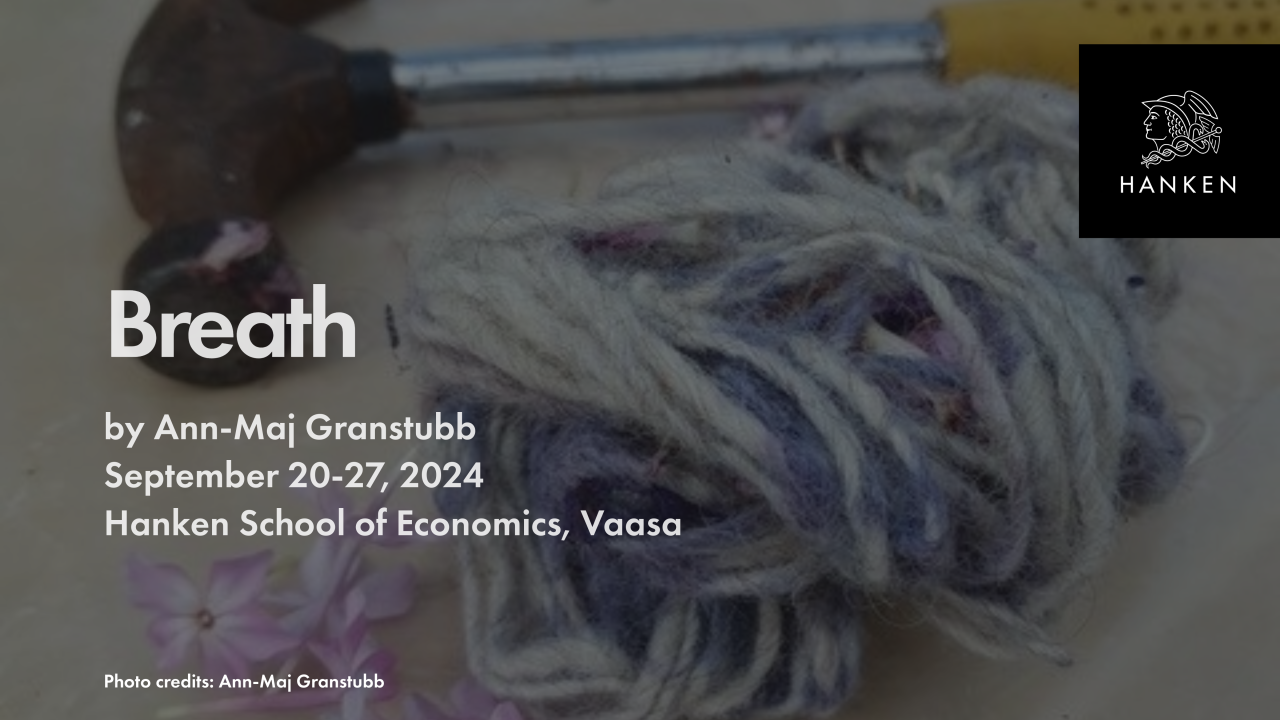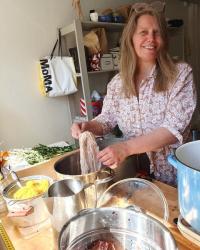SDG week art: Breath

Seven plants and seven colors from the forest is the starting point in the artwork Breath. Seven is said to be among the most sacred and magical numbers in the world. It is associated with strong spirituality and philosophy, seeking answers from silence and the truth of the heart, carrying a dream of healing the world. In the forest, the lungs of the earth, we meet the element of the breath, the wind. We become aware of the wind through how it gently touches our cheek, through the sounds of the movement in the trees, and how it spreds the scents of the forest. In the forest it is easy to breathe, be present and get in touch with our own heart and the truth.
The artwork is the second in the series Can you see the light? where Ann-Maj Granstubb lets nature’s colors meet various natural fibers and create a dialogue where light and colors take center stage. In the form of installations, the plant kingdom is interwoven with what is “man-made.”
In the work Breath, a limited amount of waste material in the form of hand-spun yarn by textile artist Moa Cederberg is used. The yarn has been dyed in seven different baths of the plants included in the artwork. And is then intertwined with the plants to wind up the glass wall between the auditorium and the dining hall at the Hanken School of Economics in Vaasa. The installation is part of the SDG Week, which this year is held from September 20-27, 2024, in conjunction with Sustainability Week and Global Goals Week.
The artwork is supported by Svensk-Österbottniska Samfundet.
About the artist:
Ann-Maj Granstubb is a multidisciplinary artist and expressive art therapy instructor. She has a background as a producer in the TV, art, and culture sectors and is one of the founders of Malakta.
In her art, Ann-Maj creates encounters between art and nature and highlights what it means to be human in the time we live in today. How can we, both as individuals and collectively, be part of the solution instead of the problem to create a bright future?
Photo credits: Patricia Rodas


